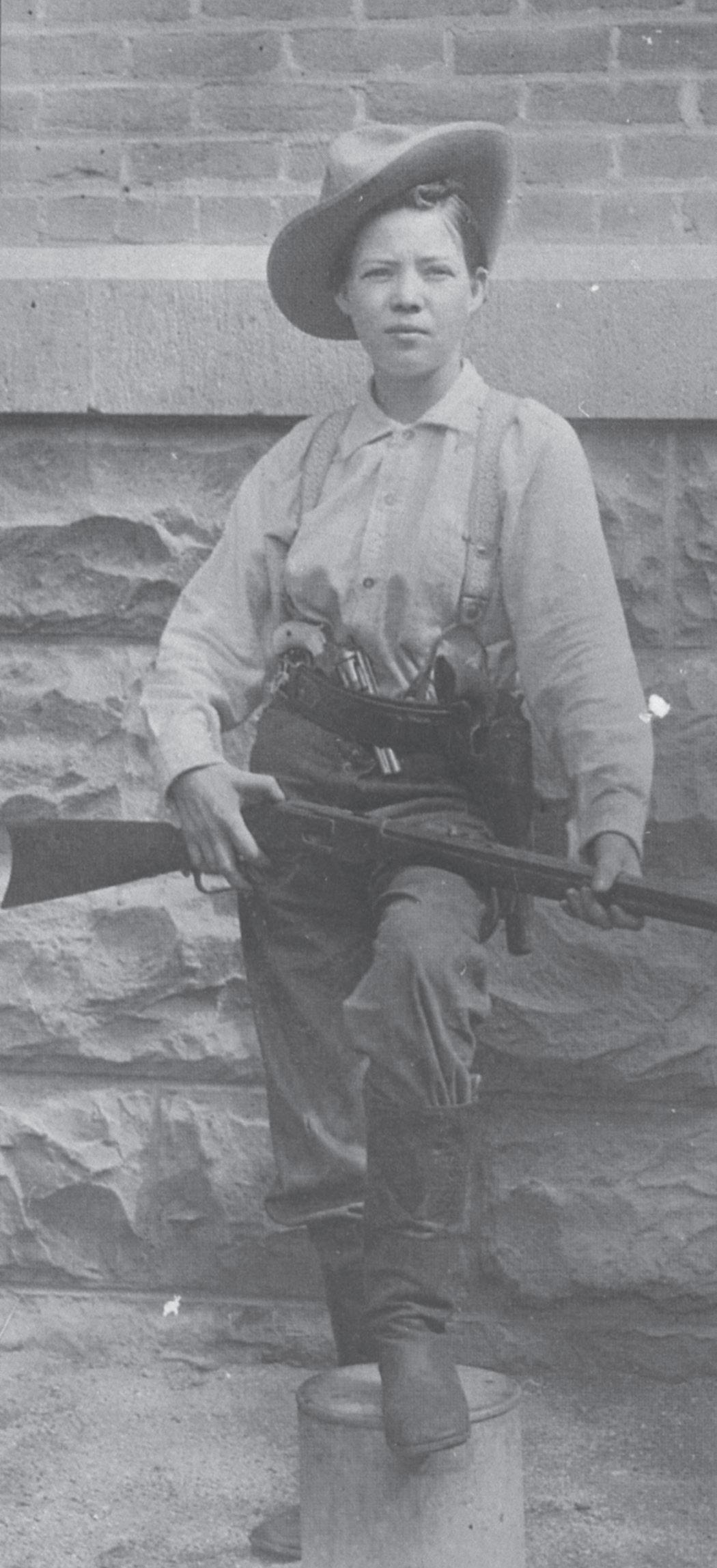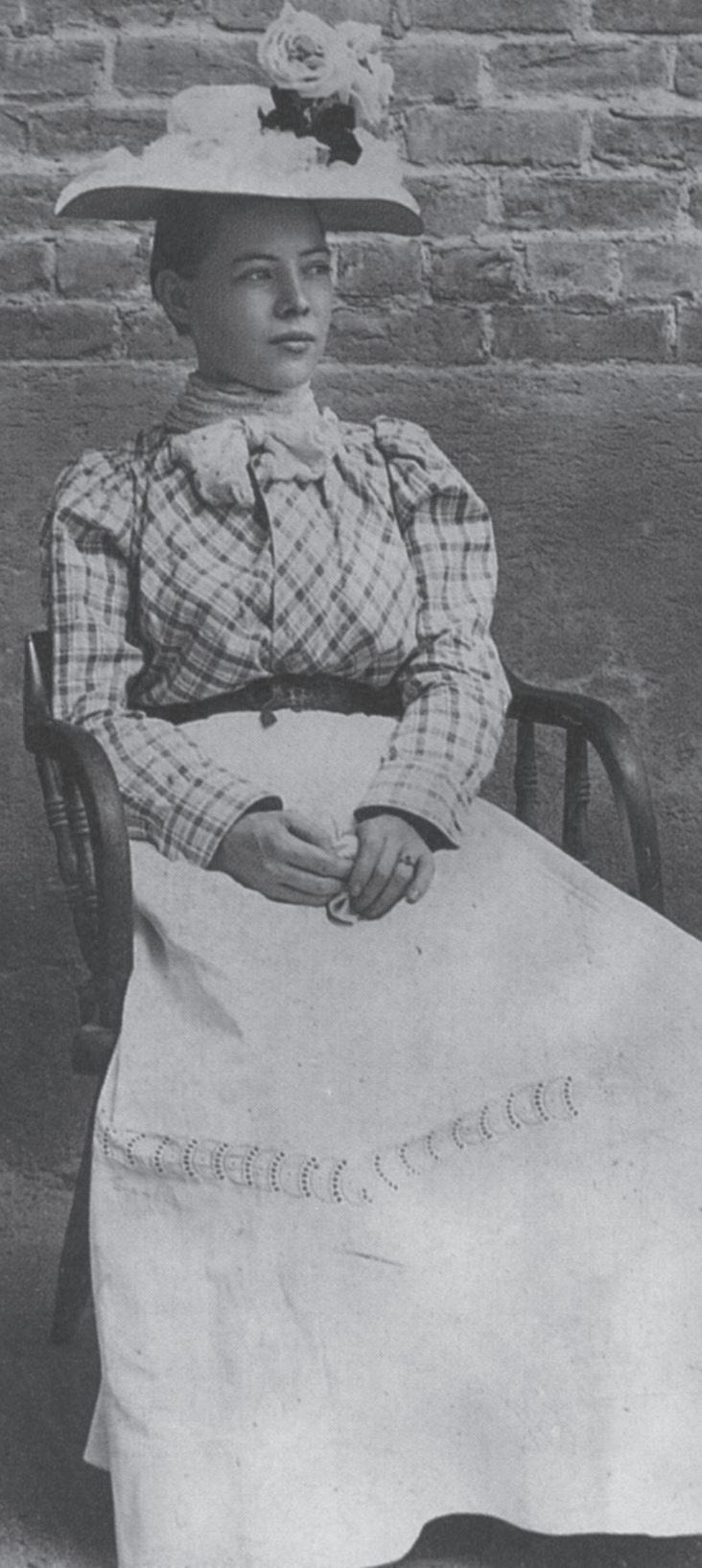
7 minute read
l Trimble’s Tales

Pearl Heart: ‘The Girl Bandit’


By Marshall Trimble
For most of her life, Pearl Hart lived in dismal obscurity. She got her chance for 15 minutes of fame following a bungled stagecoach robbery on May 29,





1899. An adoring eastern press dubbed her the “Girl Bandit” and chastised the callused Arizona judicial system for putting such a pretty young lady behind bars in the notorious Yuma Territorial Prison. Not much is known about her early years. She was born Pearl Taylor of French descent in Lindsay, Ontario, Canada. It was said she came from a respectable, well-to-do family, but things started going downhill at age 17 when she married a gambler named Freddie Hart. (Not the country singer.) They traveled to Chicago in 1893 where Fred took a job as a carnival barker at the Chicago Exposition, and she worked at odd jobs. At the exposition, she got a chance to see Annie Oakley perform and became enthralled at the Wild West show, something that likely inspired her to dump her worthless husband and head west. In Trinidad, Colorado, she took a job as a saloon singer but had to return to her family when she learned she was expecting a baby. She gave birth to a son, left him with her family and headed for Phoenix but soon found that life in the West wasn’t as glamorous as those Wild West shows she’d seen at the exposition. Sometime in 1895, her shiftless husband Fred showed up in Phoenix begging her to take him back. For a time, things were good between them until they began living it up in the saloons along Washington Street. It was there Pearl got into drugs. A second child, a girl, was born and their domestic problems resumed. Fred became bored with domestic life. An argument between the two got out of hand and he beat her up, then left town. One version says he joined Teddy Roosevelt’s Rough Riders and went to Cuba, but his name doesn’t show up on the roster. Pearl returned to her family, left the baby with her mother and headed west again. Pearl was 5 feet, 2 inches tall; weighed less than 100 pounds; was reasonably intelligent and was considered quite attractive. She took up residence in various Arizona towns like Globe, Phoenix, Tucson and Tombstone, sometimes working as a prostitute and others as a waitress or cook. She was working in a café in Mammoth when she took up with a miner named Joe Boot. Boot was a combination of miner, gambler and con man. A letter came from home saying her mother was ill and needed money. Boot decided the couple could solve their money problems by robbing a stagecoach. On the evening of May 29, 1899, Pearl, dressed in male attire and her hair pulled up under her hat, and Boot held up the stage near Kane Springs on the road from Florence to Globe. Their take was $431 and some change. She also pilfered stage driver Henry Bacon’s Colt .45. She generously gave the three passengers and









Pearl Hart, dressed in male attire, robbed a stagecoach in 1899. She was ultimately arrested, and after being found not guilty by an all-male jury, she was tried and sentenced for stealing a pistol. (Submitted photos)




Bacon each $1 for the evening meal. Th en she and Boot headed up the San Pedro River toward Benson. Unwittingly, they had forgotten to plan their getaway and got lost. Th ey were found and arrested on June 3 by Pinal County Sheriff Bill Truman and locked up in the Florence Jail. The press was fascinated by the petite, pretty, 28-year-old bandit. She fired off a fiery letter to the prosecutor, declaring, “I shall not consent to be tried under a law which my sex had no voice in making.” She became an instant darling of the women’s suffragette movement. Cosmopolitan Magazine wrote a story on her bold stagecoach robbery. Newspapers, especially the Hearst press, turned her into a national celebrity. During her trial, Pearl changed into a pretty dress and told the jury that she had robbed the stage to get enough money to visit her sick mother back east. She batted her eyes, lifted her skirt, revealed a well-shaped ankle and flirted shamelessly with the all-male jury. Naturally, they found her not guilty. Judge Fletcher Doan was outraged and ordered her to be tried again, this time for stealing Bacon’s pistol. The judge gave her five years in the Yuma Territorial Prison. Boot didn’t fare as well. The jury found him guilty and sentenced him to 30 years on the same charge. He hung around for a year or so, then escaped and was never caught. Pearl briefly enjoyed her celebrity status at the prison. Visitors and reporters were allowed to visit. She was paroled on December 15, 1902, and immediately headed east for Kansas City, where she launched her show business career as the “Girl Bandit.” Territorial Gov. Alexander Brodie refused to discuss the reason for her early release, but a story circulated that Pearl had informed the warden she was pregnant. According to Arizona legend, at the time the only two men who’d been alone with Pearl were the warden and the territorial governor. After a series of telegrams between the Capitol and the prison, it was decided to release her immediately. Pearl wasn’t pregnant, but she wasn’t dumb either and cleverly went on her way — a free woman. For a brief time, she toured the east, re-enacting her role on stage as the “Girl Bandit,” but the plot was thin and her career as an actress was brief. It turned out she was no better at acting than planning a getaway from a stagecoach robbery. Fame was fleeting, and soon Pearl drifted into anonymity. Nobody knows for certain how Pearl spent her later years, but there is strong evidence she became respectable; married a cow rancher named Cal Bywater in the Dripping Springs Mountains, south of Globe; and lived out her life as an honest cowgirl. Some accounts credit her with holding up the last stagecoach and also being the only woman to rob a stage. However, neither account is true. The last stage robbery was in Nevada in 1916, and a woman named Jane Kirkham was killed while robbing a stagecoach near Leadville, Colorado, in 1879.





CULTIVATE NEW BEGINNINGS
Our Montessori-based Memory Care program supports residents with cognitive deficits by creating an environment that enables individuals to care for themselves, others, and their community. We strive to treat residents with respect and dignity and honor their choices so they may live as independently as possible. Live a life of growth.
Age fearlessly. Live colorfully.® 7171 E. Lone Mountain Road, Scottsdale, AZ 85266 602-932-9691 | LoneMountainMemoryCare.com/NorthValley







